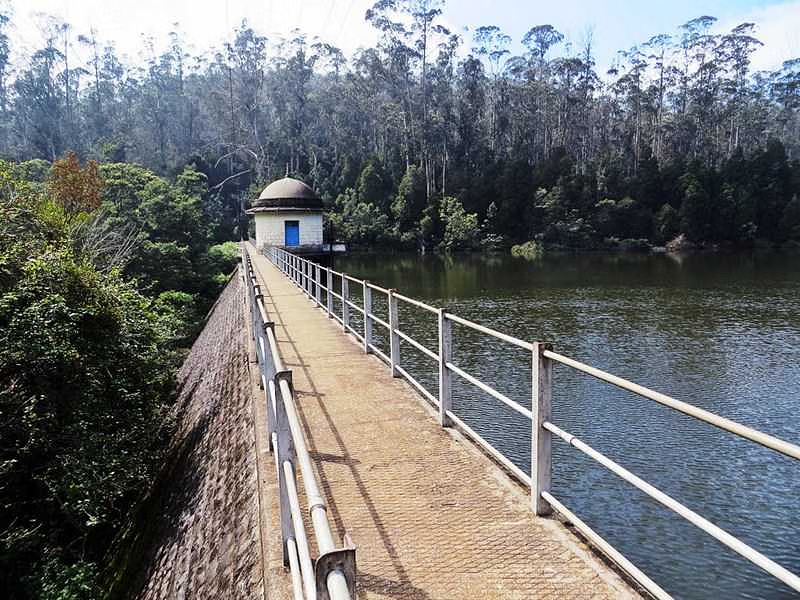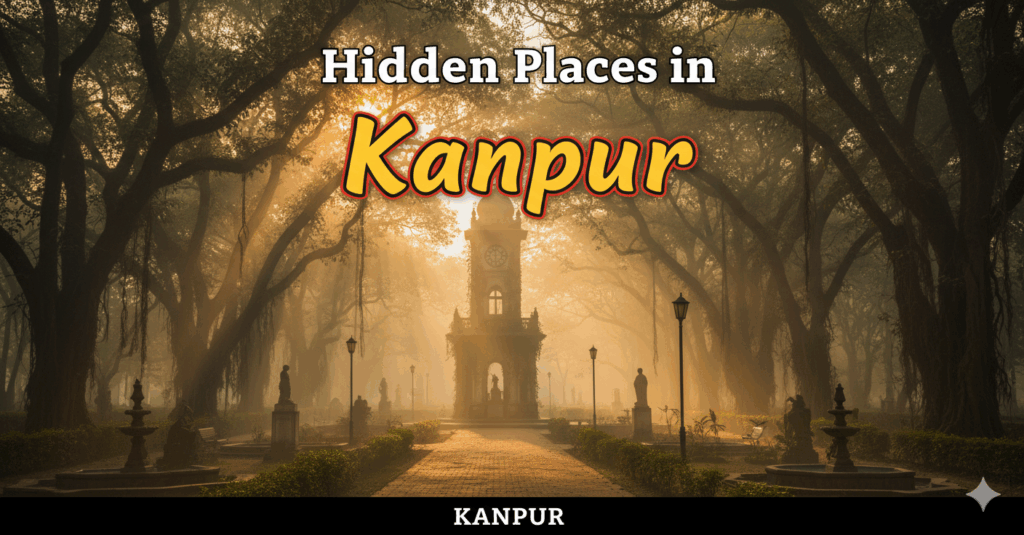Nestled in the mystical Eastern Ghats of Andhra Pradesh, Ahobilam stands as a sacred pilgrimage destination of profound significance in Hindu tradition. Known as the divine abode where Lord Narasimha (the fierce lion-man avatar of Lord Vishnu) manifested to protect his devotee Prahlada, this ancient site attracts pilgrims, adventure seekers, and spiritual enthusiasts from across India. Understanding the best time to visit Ahobilam is crucial for experiencing its divine aura and natural splendor to the fullest, whether you’re planning to navigate the challenging ahobilam temple steps or embark on the transformative ahobilam trek through the sacred Nallamala Hills.
Table of Contents
Seasonal Comparison for Ahobilam Temple Visits
| Season | Months | Temperature | Crowd Level | Trek Difficulty | Temple Experience | Rating |
| Winter | Nov-Feb | 15-25°C | High | Moderate | Excellent visibility, comfortable | ★★★★★ |
| Spring | Mar-May | 25-35°C | Moderate | Challenging | Good for early morning visits | ★★★☆☆ |
| Monsoon | Jun-Sep | 22-30°C | Low | Very Difficult | Limited access to some temples | ★★☆☆☆ |
| Autumn | Oct-Nov | 20-28°C | High (festivals) | Moderate | Festive atmosphere | ★★★★☆ |
The Sacred Legacy of Ahobilam
Ahobilam, also revered as “Ahobalam” or “Singavelkunram,” holds immense religious significance as one of the 108 Divya Desams (sacred abodes of Lord Vishnu). According to ancient Hindu scriptures, this mystical location marks the spot where Lord Vishnu assumed the fierce Narasimha avatar to defeat the demon king Hiranyakashipu and protect his devoted follower Prahlada. The temple complex is uniquely divided into Lower Ahobilam (Diguva Ahobilam) and Upper Ahobilam (Eguva Ahobilam), together housing nine different manifestations of Lord Narasimha, collectively known as the Nava Narasimha temples.
Each temple represents a distinct aspect of Lord Narasimha’s divine incarnation, featuring unique architectural elements and spiritual significance that have drawn devotees for centuries. Beyond its profound religious importance, Ahobilam’s setting amidst dense forests, pristine streams, and majestic rocky hills creates a destination that seamlessly blends spirituality with natural wonder, offering both physical and spiritual challenges that transform ordinary temple visits into extraordinary pilgrimage experiences.
Best Time to Visit Ahobilam: Comprehensive Seasonal Guide
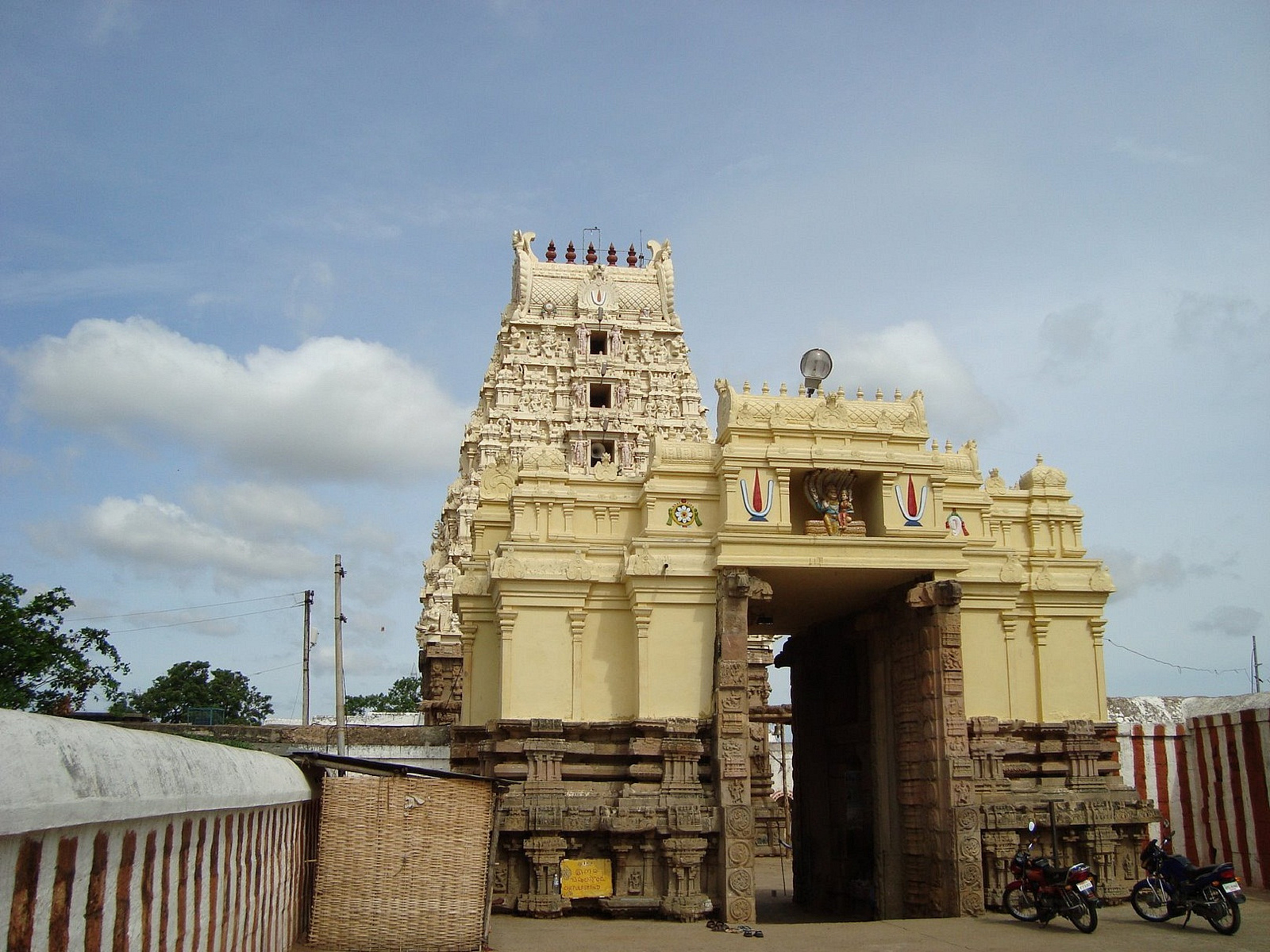
Selecting the optimal time for your Ahobilam pilgrimage significantly impacts your overall experience, affecting everything from trekking conditions to temple accessibility and spiritual atmosphere. Each season brings distinct advantages and challenges that cater to different types of pilgrims and travelers.
Winter Season (November to February): The Pilgrim’s Paradise
Winter emerges as the absolute best time to visit Ahobilam for most travelers, offering ideal conditions for both temple visits and the demanding trek to Upper Ahobilam shrines:
Temperature Range: 15-25°C providing comfortable conditions throughout the day
Weather Conditions: Clear skies with minimal rainfall and pleasant breezes
Trek Conditions: Dry terrain making the challenging ahobilam temple steps safer and more accessible
Crowd Levels: High, especially during festivals, but manageable for most activities
Best Activities: Complete temple circuit, extended meditation sessions, photography
The winter season coincides with several important festivals at Ahobilam, including Vaikunta Ekadasi (December-January) and the grand Ahobilam Brahmotsavam (January-February), adding profound cultural richness to your pilgrimage experience. The comfortable temperatures and clear visibility make this period perfect for appreciating the intricate temple architecture and surrounding natural beauty.
Autumn Season (October to Early November): The Festival Experience
Autumn serves as an excellent transitional period, offering unique advantages for spiritual seekers:
Temperature Range: 20-28°C with gradually decreasing humidity levels
Weather Conditions: Lush green surroundings following monsoon rejuvenation
Trek Conditions: Moderate difficulty with rejuvenated waterfalls and streams
Crowd Levels: Moderate to high during festival periods
Best Activities: Festival participation, nature photography, cultural immersion
This season provides an ideal balance between comfortable weather and natural beauty, with the added benefit of witnessing temples amidst post-monsoon greenery. The landscape transforms into a vibrant tapestry of colors, making it particularly appealing for photography enthusiasts and nature lovers.
Summer Season (March to May): For the Determined Devotee
Summer presents challenging conditions that require careful planning but offers unique opportunities:
Temperature Range: 25-35°C, occasionally reaching 40°C in May
Weather Conditions: Hot and dry with intense sunshine
Trek Conditions: Challenging due to heat and increased dehydration risks
Crowd Levels: Significantly lower, allowing for peaceful temple experiences
Best Activities: Early morning visits (5:00-8:00 AM), evening temple activities
Summer visits demand strategic timing, with temple activities best completed during cooler hours. The advantage of fewer crowds can provide more intimate spiritual experiences for those willing to endure the challenging conditions.
Monsoon Season (June to September): The Challenging Season
Monsoon brings dramatic landscape transformations but significant accessibility challenges:
Temperature Range: 22-30°C with high humidity levels
Weather Conditions: Heavy rainfall with spectacular but potentially dangerous conditions
Trek Conditions: Very difficult due to slippery paths and flash flood risks
Crowd Levels: Lowest of the year
Best Activities: Lower temple visits, monsoon photography (with extreme caution)
While monsoon creates breathtaking scenery with cascading waterfalls and lush vegetation, the treacherous ahobilam temple steps become extremely hazardous, making this season suitable only for experienced trekkers with proper safety equipment.
Ahobilam Temple Steps: The Sacred Ascent
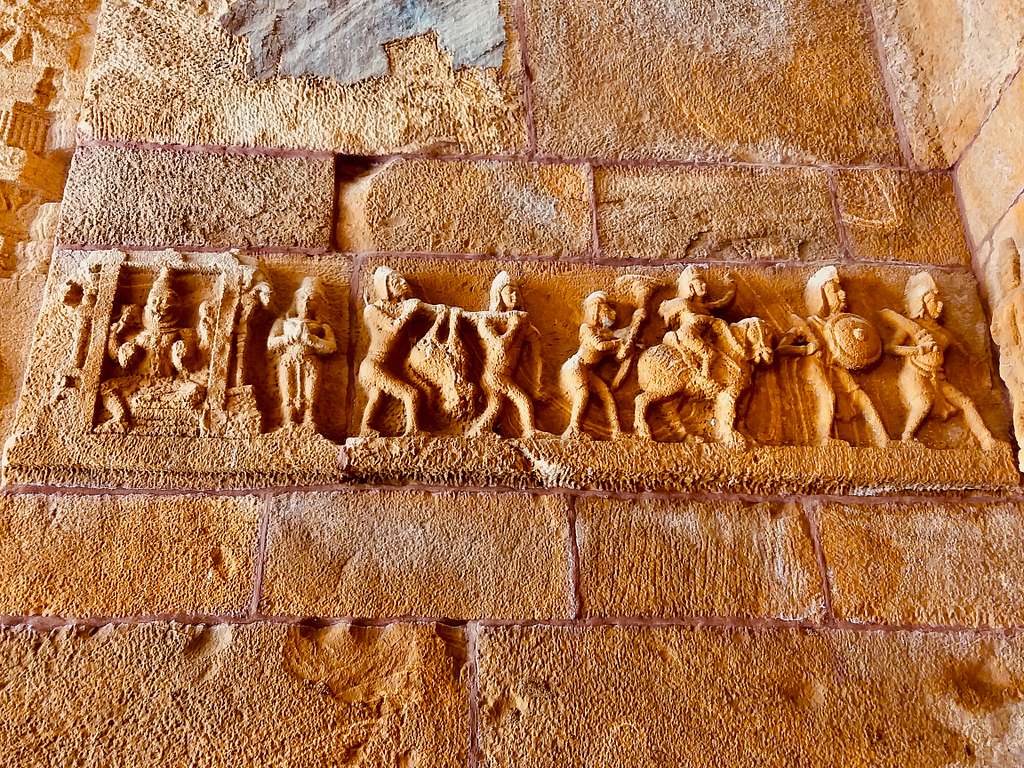
The journey to Upper Ahobilam involves navigating the legendary ahobilam temple steps, a challenging but spiritually rewarding climb that serves as a physical manifestation of the devotee’s spiritual ascent toward divine realization. This ancient pathway, carved into the mountain over centuries, represents one of India’s most demanding temple approaches.
The Sacred Climb Details
The trek from Lower Ahobilam to Upper Ahobilam encompasses approximately 1,200 stone steps carved into the mountainside, involving:
Total Distance: 8 kilometers round trip through varying terrain
Elevation Gain: Approximately 800 meters of vertical ascent
Duration: 1.5-2 hours uphill, 1-1.5 hours downhill for average fitness levels
Terrain Types: Forest paths, ancient stone stairways, rocky sections, and stream crossings
Difficulty Level: Moderate to challenging, requiring reasonable physical fitness
The complete journey takes visitors through multiple ecological zones, from dense forest areas to rocky outcrops, with each section presenting unique challenges and spiritual significance.
Key Landmarks Along the Sacred Path
Prahlada Mettu: Sacred meditation spot where Lord Narasimha’s devotee Prahlada worshipped
Jwala Narasimha Shrine: Midway temple marking the first divine manifestation
Ugra Stambham: The legendary pillar from which Lord Narasimha emerged
Bhavanarayana Cave: Ancient cave with inscriptions and meditation chambers
Rest Platforms: Traditional stone platforms strategically placed for pilgrim recovery
Spiritual Significance of the Steps
Each section of the ahobilam temple steps carries profound spiritual symbolism:
- Initial Steps: Represent leaving behind worldly attachments and concerns
- Middle Section: Symbolize perseverance through spiritual challenges and tests
- Steep Climbs: Represent ultimate surrender and dedication to divine will
- Final Approach: Culminates in spiritual achievement and divine blessing
Local tradition recommends chanting the sacred “Om Namo Narayanaya” mantra while ascending these steps for spiritual protection and enhanced pilgrimage benefits.
Ahobilam Tour: Comprehensive Pilgrimage Experience
Planning a complete ahobilam tour involves understanding the intricate network of temples, sacred sites, and spiritual practices that make this destination unique among Indian pilgrimage centers. A well-structured tour ensures you experience all aspects of this sacred destination while respecting its spiritual significance and natural environment.
The Nine Sacred Temples (Nava Narasimha Kshetrams)
Lower Ahobilam Complex:
- Prahlada Varada Temple: Main temple accessible by road
- Malola Narasimha Temple: Cave temple with natural rock formations
- Krodha Narasimha Temple: Fierce aspect temple in secluded setting
Upper Ahobilam Complex:
- Ahobila Narasimha Temple: Primary hilltop shrine requiring full trek
- Varaha Narasimha Temple: Unique combination of Varaha and Narasimha forms
- Karanja Narasimha Temple: Temple surrounded by natural springs
- Bhargava Narasimha Temple: Positioned on elevated rocky platform
- Yogananda Narasimha Temple: Meditation-focused shrine in serene location
- Chatravata Narasimha Temple: Historic temple with ancient inscriptions
Recommended Tour Itinerary
Day 1: Arrival and Acclimatization
- Check into ahobilam accommodation
- Visit Lower Ahobilam temples
- Attend evening prayers and cultural programs
- Prepare for Upper Ahobilam trek
Day 2: Upper Ahobilam Trek
- Early morning start (5:00 AM)
- Complete trek to Upper Ahobilam
- Visit all accessible Upper temples
- Overnight stay at Upper Ahobilam (if desired)
Day 3: Cultural Exploration and Departure
- Visit remaining temples
- Participate in traditional rituals
- Explore local culture and crafts
- Departure or extension to nearby sites
Spiritual Activities and Practices
Traditional Rituals: Participate in daily prayer sessions and abhishekam ceremonies
Meditation Sessions: Utilize the serene forest environment for spiritual practice
Vedic Chanting: Join group chanting sessions led by temple priests
Cultural Programs: Attend traditional dance and music performances
Pilgrimage Circuits: Complete traditional circumambulation of sacred sites
Ahobilam Accommodation: Stay Options for Pilgrims
Understanding available accommodation options ensures comfortable stays that enhance your spiritual journey while respecting the sacred nature of the destination. The remote location offers limited but adequate lodging choices catering to different needs and budgets.
Temple Trust Accommodations
Sri Ahobilam Narasimha Swamy Devasthanam Guesthouse:
- Location: Near Lower Ahobilam Temple complex
- Cost: ₹500-1,500 per night depending on room category
- Facilities: Basic rooms, vegetarian canteen, limited hot water
- Booking: Through temple office or official website
- Best For: Pilgrims seeking authentic spiritual atmosphere
Pilgrim Dormitories:
- Location: Within temple complex
- Cost: ₹200-500 per night
- Facilities: Shared accommodations with basic amenities
- Booking: Walk-in basis or temple office
- Best For: Budget-conscious devotees and group pilgrims
Government Tourism Accommodation
APTDC (Andhra Pradesh Tourism Development Corporation) Hotel:
- Location: 1 kilometer from Lower Ahobilam Temple
- Cost: ₹1,200-2,200 per night
- Facilities: Comfortable rooms, restaurant, better amenities
- Booking: Online through APTDC website
- Best For: Tourists seeking comfort with accessibility
Private Lodges and Guesthouses
Local Private Accommodations:
- Location: Various locations near temple complex
- Cost: ₹500-1,000 per night
- Facilities: Basic rooms with limited amenities
- Booking: Direct contact or walk-in
- Best For: Flexible budget travelers
Accommodation Booking Tips
- Advance Reservations: Book 1-2 months ahead for festival seasons
- Essential Supplies: Carry toiletries and personal items
- Power Considerations: Prepare for frequent power outages
- Connectivity: Limited mobile network coverage
- Food Options: Only vegetarian meals available
Ahobilam Trek: The Spiritual Adventure
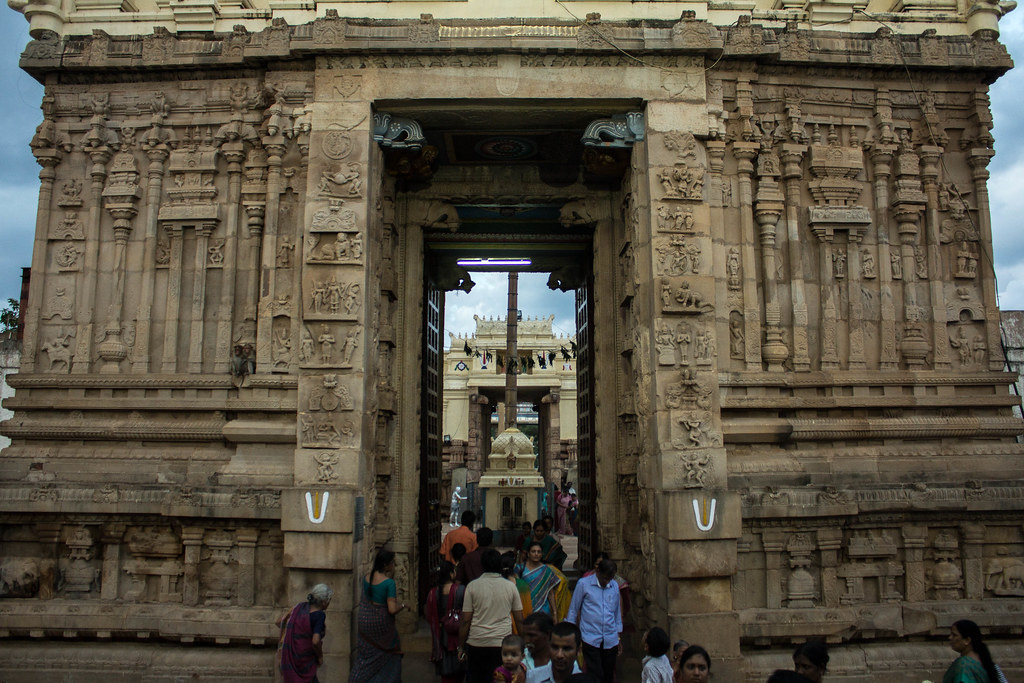
The ahobilam trek represents far more than a physical journey—it serves as a moving meditation that combines challenge, natural beauty, and profound spiritual significance. This sacred path through the Eastern Ghats offers pilgrims an opportunity to follow ancient routes while experiencing the raw beauty of the Nallamala Hills.
Trek Specifications and Difficulty
Distance: 8 kilometers round trip from Lower to Upper Ahobilam
Elevation Gain: 800 meters of vertical ascent
Duration: 1.5-2 hours uphill, 1-1.5 hours downhill
Difficulty Level: Moderate to challenging
Terrain: Forest paths, rocky sections, ancient stone steps
Water Sources: Limited; carry adequate personal supply
Best Trekking Seasons
Winter (November-February): Ideal conditions with dry paths and comfortable temperatures Autumn (October-November): Good conditions with lush post-monsoon scenery Spring (March-April): Challenging due to increasing heat; early morning starts essential Summer (May-June): Very challenging; not recommended for most trekkers Monsoon (June-September): Dangerous due to slippery paths and flash flood risks
Essential Trekking Equipment
Footwear: Sturdy hiking boots with excellent grip Clothing: Moisture-wicking, breathable fabrics Hydration: Minimum 3 liters of water per person Nutrition: Energy bars, dry fruits, light snacks Safety Gear: First aid kit, emergency whistle, flashlight Weather Protection: Sun hat, rain gear (seasonal)
Spiritual Highlights Along the Trek
Moving Meditation: The trek serves as a form of walking meditation
Natural Temples: Various rock formations considered sacred
Wildlife Encounters: Deer, peacocks, various bird species
Scenic Viewpoints: Panoramic vistas of Eastern Ghats
Sacred Streams: Purifying water crossings with spiritual significance
Trekking Safety Guidelines
Group Travel: Trek with companions for safety and support
Weather Monitoring: Check conditions before starting
Emergency Preparedness: Inform others of your plans
Wildlife Awareness: Respect local fauna and maintain distance
Environmental Responsibility: Leave no trace principles
Ahobilam Timings: Temple Schedule and Spiritual Activities
Understanding the ahobilam timings for various temples, rituals, and spiritual activities helps pilgrims plan their visit effectively while ensuring they don’t miss important ceremonies and optimal darshan opportunities.
Lower Ahobilam Main Temple Timings
Daily Schedule:
- Morning Session: 6:00 AM – 12:00 PM
- Afternoon Session: 4:00 PM – 8:00 PM
- Special Early Darshan: 5:00 AM – 6:00 AM (advance booking required)
- Closed Period: 12:00 PM – 4:00 PM (temple maintenance and priest rest)
Daily Rituals:
- Suprabhatam: 5:30 AM daily awakening prayers
- Kalasandhi: 8:00 AM morning prayers
- Uchikalam: 11:00 AM midday worship
- Sayarakshai: 6:00 PM evening prayers
- Ekanta Seva: 8:00 PM final prayers
Upper Ahobilam Temple Timings
Daily Operations:
- Opening Hours: 8:00 AM – 5:00 PM continuously
- Priest Availability: 9:00 AM – 11:00 AM, 2:00 PM – 4:00 PM
- Special Considerations: Earlier closure (3:00 PM) during monsoon season
Festival Period Timings
Brahmotsavam (January-February):
- Extended Hours: 4:00 AM – 10:00 PM
- Special Processions: Multiple times throughout the day
- Cultural Programs: Evening performances until late
Vaikunta Ekadasi (December-January):
- Special Gate Opening: Vaikunta Dwaram opens at midnight
- Continuous Darshan: 24-hour temple access
- Special Ceremonies: Throughout the day and night
Practical Timing Recommendations
Optimal Visit Times:
- Early Morning: 6:00-9:00 AM for peaceful darshan
- Late Evening: 5:00-7:00 PM for atmospheric prayers
- Avoid: Midday closure periods
Trek Timing:
- Start: 6:00 AM for comfortable Upper Ahobilam visit
- Return: Complete descent by 5:00 PM for safety
Nearest Railway Station to Ahobilam: Complete Transportation Guide
Reaching Ahobilam requires strategic transportation planning due to its remote location in the Eastern Ghats. Understanding the various options from different railway stations helps ensure smooth travel to this sacred destination.
Primary Railway Stations
Nandyal Railway Station (Recommended):
- Distance: 70 kilometers from Ahobilam
- Connectivity: Well-connected to major cities
- Key Trains: Venkatadri Express, Krishna Express, Rayalaseema Express
- Travel Time to Ahobilam: 2-2.5 hours by road
- Best For: Most travelers, especially from Hyderabad and Vijayawada
Cuddapah (Kadapa) Railway Station:
- Distance: 115 kilometers from Ahobilam
- Connectivity: Better connections to Chennai and southern cities
- Key Trains: Rayalaseema Express, Bangalore Mail
- Travel Time to Ahobilam: 3-3.5 hours by road
- Best For: Travelers from Tamil Nadu and Karnataka
Kurnool Railway Station:
- Distance: 120 kilometers from Ahobilam
- Connectivity: Limited direct trains, mostly passenger services
- Travel Time to Ahobilam: 3-4 hours by road
- Best For: Budget travelers with flexible schedules
Last-Mile Transportation Options
From Nandyal:
- Private Taxi: ₹1,200-1,800 for one-way journey
- Shared Taxis: ₹200-300 per person (when available)
- APSRTC Buses: Limited direct services, ₹80-120 per person
- Travel Time: 2-2.5 hours depending on mode
From Cuddapah/Kurnool:
- Private Taxi: ₹1,800-2,500 for one-way journey
- Bus to Allagadda: Connect to local transport
- Travel Time: 3-4 hours total journey
Alternative Transportation Routes
By Road from Major Cities:
- Hyderabad: 350 kilometers (7-8 hours)
- Bangalore: 400 kilometers (8-9 hours)
- Chennai: 450 kilometers (9-10 hours)
- Vijayawada: 280 kilometers (6-7 hours)
Nearest Airports:
- Kurnool Airport: 120 kilometers (limited connectivity)
- Tirupati Airport: 200 kilometers (better connectivity)
- Hyderabad Airport: 350 kilometers (major international hub)
Transportation Tips
Booking Recommendations:
- Reserve taxis in advance during festival seasons
- Confirm bus schedules as they may be irregular
- Consider package deals including transport and accommodation
Travel Logistics:
- Carry sufficient cash as ATMs are limited
- Pack light snacks for long journeys
- Keep emergency contact numbers handy
- Plan for potential delays during monsoon season
Cultural Traditions and Local Customs
Understanding and respecting local traditions enhances your pilgrimage experience while showing proper reverence for this sacred space. Ahobilam maintains centuries-old customs that continue to guide spiritual practices and visitor interactions.
Traditional Spiritual Practices
Pradakshina: Circumambulation of temples in clockwise direction
Namaskaram: Prostration before deities with specific protocols
Archana: Personal prayers with flower offerings and mantras
Abhishekam: Ceremonial bathing of deities with sacred substances
Seva: Voluntary service to temples and fellow pilgrims
Festival Celebrations and Customs
Brahmotsavam: Grand annual festival with elaborate processions
Narasimha Jayanti: Birth celebration of Lord Narasimha
Vaikunta Ekadasi: Sacred day for achieving spiritual liberation
Rathotsavam: Chariot festival with community participation
Kalyanam: Divine marriage ceremonies with traditional rituals
Visitor Etiquette and Guidelines
Dress Code: Modest traditional attire strongly preferred
Photography: Temple exteriors permitted, interior photography restricted
Behavior: Maintain silence during prayers and ceremonies
Offerings: Flowers, fruits, coconuts, and monetary donations accepted
Respect: Follow temple guidelines and priest instructions
Local Culture and Language
Primary Language: Telugu, with Hindi and English partially understood
Local Customs: Touching feet of elders, traditional greetings
Food Traditions: Strictly vegetarian meals, temple prasadam significance
Hospitality: Warm welcome for genuine pilgrims and respectful visitors
Conservation: Respect for natural environment and wildlife
Extended Pilgrimage and Travel Opportunities
Consider enhancing your Ahobilam pilgrimage by combining it with other spiritual destinations or exploring India’s diverse coastal and island destinations for a comprehensive travel experience. Professional tour operators can design itineraries that balance spiritual journeys with cultural exploration and natural beauty.
Whether you’re interested in Goa tour packages from Mumbai for coastal spirituality and relaxation, exotic Andaman tour packages from Mumbai for pristine island experiences, serene Lakshadweep tour package from Mumbai for ultimate tropical retreats, or comprehensive India tour packages from Mumbai covering multiple spiritual and cultural destinations, professional travel arrangements can create memorable experiences that complement your Ahobilam pilgrimage.
Conclusion: Planning Your Perfect Ahobilam Pilgrimage
The best time to visit Ahobilam undoubtedly falls during the winter months from November to February, when comfortable temperatures, clear skies, and dry conditions create ideal circumstances for both temple visits and the challenging trek to Upper Ahobilam. This optimal season coincides with important festivals that enhance the spiritual experience while providing safe and comfortable conditions for navigating the demanding ahobilam temple steps.
From the sacred ascent up the legendary ahobilam temple steps to the peaceful darshan at ancient hilltop shrines, every aspect of the Ahobilam experience contributes to a profound spiritual adventure. The ahobilam trek through pristine forests, the authentic ahobilam accommodation experiences, and the traditional temple rituals all combine to create an unforgettable pilgrimage that touches both heart and soul.
You can visit us at VDP Travels, Neighbourhood Complex, F- 5, near SBI Bank, Sector 4, Nerul, Navi Mumbai, Mumbai, Maharashtra 400706. For comprehensive pilgrimage experiences and customized spiritual journey itineraries, call +91 99675 18405, or visit https://vdp-travels.com.
Best Time to Visit Ahobilam: FAQ
What is the best time to visit Ahobilam for comfortable trekking and temple visits?
November to February is ideal, with temperatures ranging 15-25°C, clear skies, and dry trekking conditions. This period offers perfect weather for both temple visits and the challenging trek to Upper Ahobilam.
How difficult are the ahobilam temple steps and what should I expect?
The trek involves 1,200 stone steps over 8 kilometers with 800 meters elevation gain, taking 1.5-2 hours uphill. It requires moderate fitness and proper preparation including sturdy footwear and adequate water.
What accommodation options are available for ahobilam tour planning?
Options include Temple Trust Guesthouse (₹500-1,500), APTDC Hotel (₹1,200-2,200), and private lodges (₹500-1,000). Book 1-2 months ahead for festival seasons and peak winter months.
Which is the nearest railway station to ahobilam and how do I reach from there?
Nandyal Railway Station (70 km) is most convenient, with good connectivity to major cities. From there, take private taxi (₹1,200-1,800) or APSRTC bus (₹80-120) to reach Ahobilam.
What are the ahobilam timings for temple visits and rituals?
Lower Ahobilam: 6:00 AM-12:00 PM, 4:00 PM-8:00 PM. Upper Ahobilam: 8:00 AM-5:00 PM. Special early darshan available at 5:00 AM with advance booking.
Can I complete the ahobilam trek as a day trip or should I stay overnight?
While possible as a day trip, overnight stay is recommended for the complete spiritual experience. Start early (6:00 AM) for day trips, or stay overnight at Upper Ahobilam for deeper immersion.
Is the ahobilam trek safe during monsoon season?
No, monsoon season (June-September) makes the trek very dangerous due to slippery paths, flash flood risks, and limited temple access. Only lower temples are recommended during this period.
What should I pack for the ahobilam trek and temple visits?
Essential items include sturdy hiking boots, 3 liters of water, energy snacks, first aid kit, sun protection, modest temple attire, and flashlight for power outages.
Are there any age restrictions for visiting all nine Narasimha temples?
While there are no formal age restrictions, the challenging trek to Upper Ahobilam requires reasonable fitness. Elderly pilgrims can access Lower Ahobilam temples easily by road.
What festivals are celebrated at Ahobilam and when should I visit for cultural experiences?
Major festivals include Brahmotsavam (January-February), Vaikunta Ekadasi (December-January), and Narasimha Jayanti. These periods offer extended temple hours, special rituals, and cultural programs but require advance booking.

